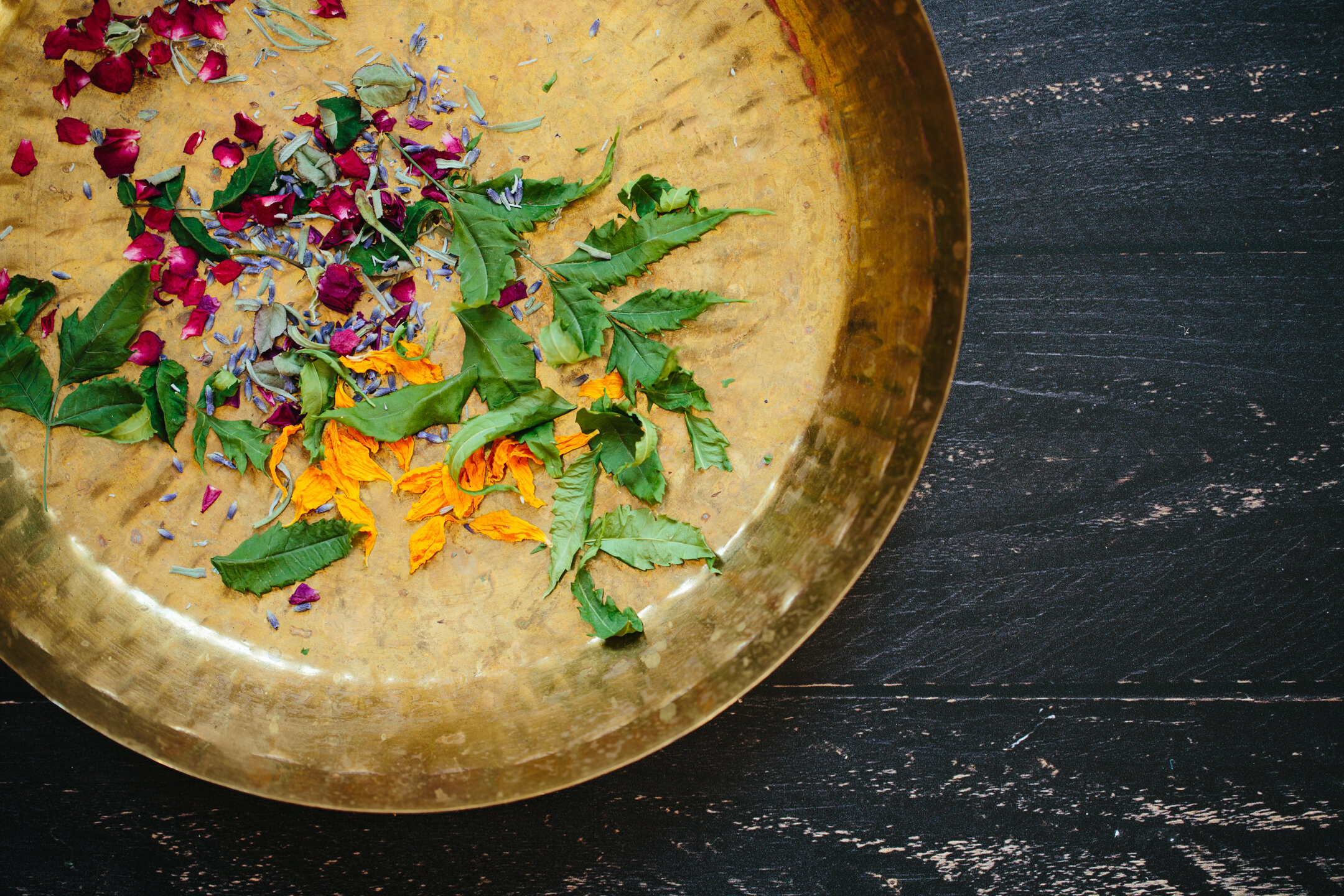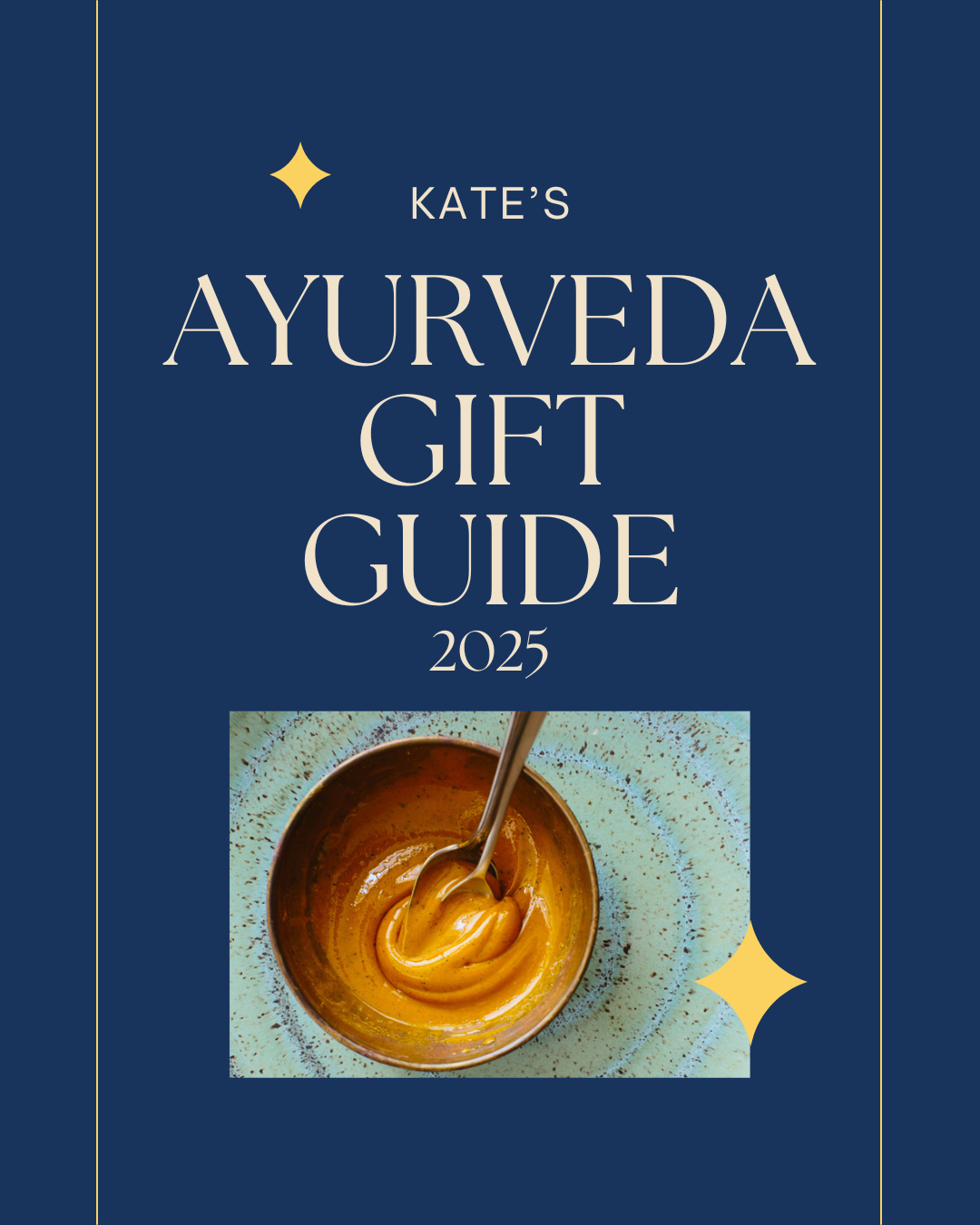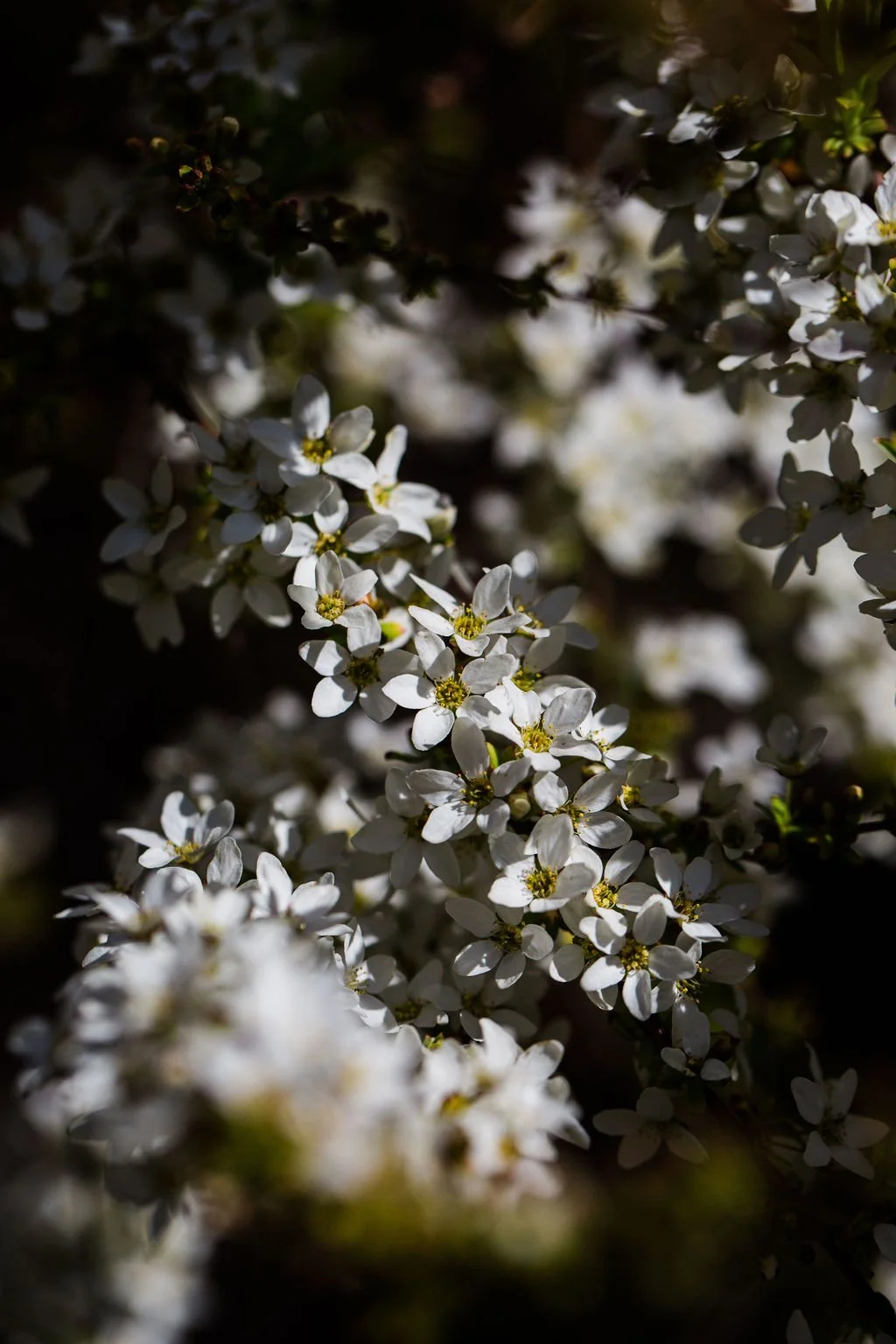
THE SEASONAL BLOG
The Seasonal blog is a collection of articles and musings from Ayurvedic Practitioner, Kate O’Donnell.
Here you’ll find a sanctuary of Ayurvedic recipes, lifestyle insights, and self-care rituals designed to nurture your entire being.
Happy reading!
What is your relationship to Discipline like?
I can’t hear this enough! I have a love/hate vibe with all my healthy routines sometimes. Thank goodness for fall cleanse that gets me back to center.
Always a dance between the appetites of the senses and the knowledge that sleep, rest, simplicity and quietude are necessary medicines too.
Do you agree? What is your relationship to Discipline like?
Kate’s Ayurveda Gift Guide 2025: Simple, Sweet, and Actually Helpful Gifts for Winter
Every year I’m asked the same question: What should I get the people I love that actually supports their well-being? This is my favorite kind of question — because Ayurveda has always understood that gifting is really about care, warmth, and nourishment, not throwing random objects into the well of desire.
So this year, I put together my Ayurveda Gift Guide, a small and curated list of things I truly use, love, and believe your people will be stoked to receive. Think kitchen friends, cozy winter layers, and self-care wonders that calm the nervous system and bring a little beauty to cold, dark months.
Inside the guide, you’ll find my favorite self-care staples — like The Fix Stick, Osi Oils travel kit, ghee vetiver soap, and body butter with absolutely zero scent (trust me, this is a win!)
There’s a whole page of kitchen delights too: ghee trios, turmeric honey, my beloved copper spice box, and a winter drinks bundle for keeping digestion warm and bright all season.
For the cold-weather lovers, I included all my warm and cozy essentials — bamboo PJs, the quilted house coat, silk pillowcase, and the oversized cashmere sweater I live in all winter long (size down!).
And yes… there’s an exclusive launch: my limited-edition Cardamom Lime Fix Stick, created in collaboration with Farmtrue and inspired by The Everyday Ayurveda Cookbook. It’s small-batch, deeply nourishing, and no one you know will already have one.
You’ll also find discounts throughout the guide — 20% off my favorite brands, including Cozy Earth, Farmtrue, Banyan Botanicals, Fount Society, and more. The Cozy earth and Fount Society discounts are stackable on top of the seasonal sale, through Dec 15th, which gets you 40-50% off.
This gift guide is meant to make your holiday season easier, sweeter, and way less stressful. These are things that soothe, soften, nourish, and bring people back into their bodies — which is a great way to focus your gifting.
Download your free Ayurveda Gift Guide, enjoy the discounts, and gift something that helps someone feel better this season.
With love,
Kate
Back to School Balance
Back-to-school isn’t just for kids—our bodies and minds go through it too. 🍂 Did you know sudden schedule shifts can trigger Vata imbalance? Explore any of these Top Five Tips and give your system some support during the September changes.
More on this in episode #47 on the Everyday Ayurveda with Kate podcast. I break down practices to ease anxiety, improve digestion, and restore rhythm when Vata goes whacky.
Where Does The Energy Go After Menopause? An Ayurvedic Look At Apana Vayu
Most of us learned to track the menstrual cycle by calendars and cramps. Ayurveda invites us to notice it as a movement of energy. Apana vayu is the downward-and-outward current that governs menstruation, elimination, and childbirth. It is also a teacher. Each month, apana escorts the body through a complete act of letting go.
So what happens when menstruation ends?
Ayurveda suggests that the current does not disappear. It recirculates. When bleeding ceases, the significant energetic outflow that once moved down and out begins to refine and move in and up. This simple idea reframes an entire life stage. Many women describe feeling drawn toward study, contemplation, service, or leadership in ways that surprised them. Seen through the lens of prana, this is not a personality change. It is a redistribution.
How to support this redirection:
Guard your sleep like a ritual. Deep rest steadies prana so subtler currents can rise. Try tech-off an hour before bed, light stretching, and Yoga Nidra audio while you drift.
Eat for clarity. Aim for regular mealtimes and warm, digestible foods. Add steady protein and keep dinner on the lighter side so sleep stays easy.
Tend the senses. Gentle oil massage before a shower, a few minutes of alternate-nostril breathing, or simply stepping outside at sunrise to reset your clock.
Create a simple altar to attention. One cushion, one candle, five minutes daily. Sit, watch the breath move. Over time you will feel the “up and in” current gather.
Choose one act of service. As energy rises, it naturally seeks expression. Offer an hour a week to a student, neighbor, or community project. Let the inward current become outward wisdom.
Midlife often reveals what was waiting for space. When we support apana’s quiet turn, the mind grows clearer, the heart steadier, and purpose has room to breathe.
Health Disclaimer:
The information shared on Everyday Ayurveda with Kate is for educational purposes only and is not a substitute for medical advice, diagnosis, or treatment. Always consult a qualified healthcare provider before making changes to your diet, supplements, or wellness routine.
Protein
Here are some foods that Ayurveda texts talk about that will get you your protein. A few, like tahini, are my modern add-one that follow the ancient principles. Do you eat any of these???
I talk about protein according to Ayurveda IN DEPTH on episode 23 of the Everyday Ayurveda Podcast. Get the rest of the story about how and when to eat your protein!
I Do These 5 Things for My Sleep
Sleep can get weird at the change of seasons. These are my five musts for sleep:
- Start early. My prime working hours are 10-3. I do my health routines, including food prep, in the AM, then I focus on work.
- I begin to wind-down in the afternoon—not just at bedtime. I may still be working, but I’m not letting myself get whipped up.
- Eat grounding meals by 2PM. Ease into sleep with a lighter meal at night. 2-3 hours before bed.
- Take a sensory break between 2–6PM (even 10 minutes helps).
- Ditch the evening sugar and screens.
When sleep gets weird, I ask myself: Am I doing too much?
At the end of the day, nothing matters more than sleep! What works for you?
If you missed episode 27 of the Everyday Ayurveda podcast- it’s all about sleep!
The effects of a food
Ayurveda doesn’t say a food is good or bad. The effects of a food depend on certain factors.
The way your body responds to a food depends upon…
Your climate
For example, cold food in a cold place will be tougher on your gut
Timing
Pizza at midnight will disturb the vibe more than at midday…agreed?
Quantity
One or two pieces of pizza may be completely digestible for you, but the third could put your belly over the top.
So, let’s love our food when we eat it, and try to eat it at the right time and place.
Love, Kate
fall Into Balance
The “wind” comes up in autumn which can get you feeling a little tweaked, easily overwhelmed, perhaps irritable from leftover summer heat.
A few simple fall tweaks can have you feeling less tweaked!Slow down even for a few breaths before you eat and enjoy better digestion and mental space.Don’t let the chill getcha!Shift from salads and fresh summer fruits to cooked greens and veggies, and cooked apples, prunes, and the like.
Make coriander tea by boiling 16 oz of water with 1 tsp coriander seed (crush it first) for 15 minutes. Strain and drink warm or even room temp. It’s benefits are endless this time of year.To learn more recipes and techniques for balance this time of year, check out the Fall Community cleanse here, where we learn by doing it! together!
What your poo is telling you
OK, no photos for this one thank goodness! What is your poo telling YOU? Drop any questions in the comments. I don’t mind talking about poop. I’m a professional, in fact.
Can you guess which dosha is at work in each of these poo-types?? Leave your guesses in the comments.
Want to go deeper in healing your digestion? Get my MasterClass - Improve Digestive Health: Agni and Ama at the Ayurvedic Living Institute, find our course catalogue here!
Your Digestion Needs a Break
Eating too often is one of the biggest problems for digestion in many of the people I work with.
I talk about how this, and other surprising factors, contribute to weight gain and what to do about it in podcast episode #35 on Weight Gain. Listen to podcast wherever you get your podcasts and remember to follow to be the first to know about new episodes.






































